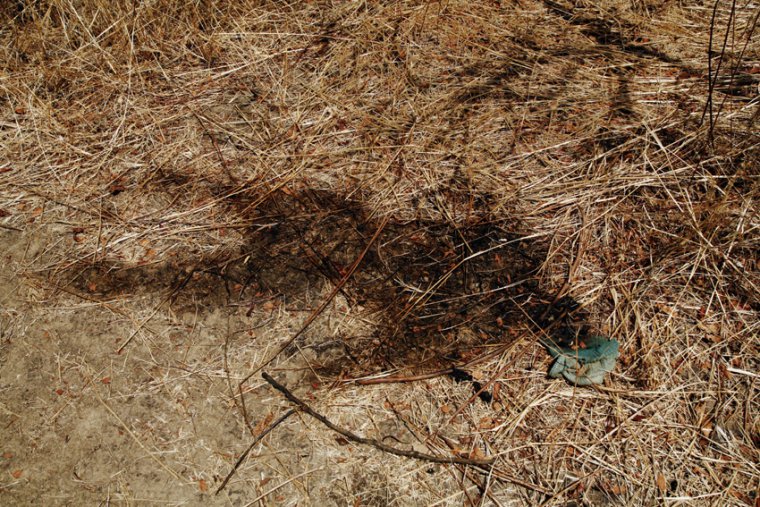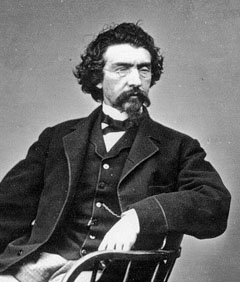Photo by: Jacob Riis
Year
Created: 1890
Texture:
There are many textures in the image. This helps to
really define certain aspects of the image. The children are sitting on broken
pieces of something and it helps to show the conditions of which they are
working. The texture of the wood in the background shows how old the buildings
were.
Depth of
Field:
The depth of field really makes you see the other parts
of the image. This is taken in the slums of New York City and the background
really helps to portray that. If the image was just on the children it wouldn’t
show that they are sleeping on a barrel and sitting on broken material. Instead
of just showing them, you really see why the picture was taken the way it was. The
image has the right depth of field to show everything that is important in the
image.
Is the
image black and white or color?
Back in the 18th century photojournalists did
not have the ability to take a photo that had color in it. Although the photo
had to be in black and white, I think that it gives the photo more of a
meaning. It makes the photo have a dramatic effect. It does show how things
were back when children were working in these conditions.
Why did you
choose the image?
I chose the image because of the meaning behind it. All
of the magazines during that time would print ads advertising stores. Those
stores would have children right from New York City working endless hours to
make their products. The image shows the other side of the advertisement and
how the other people were treated on the other end of the spectrum. It makes me feel sorry for the children and
angry for the company for using children to make more money.
Photo by: Elliott Erwitt
Year
Created: 1950
Rule of
Thirds:
Automatically my eyes go to the right of the image. The
rule of thirds also shows the separation between the black and the white water
fountain by having the white side on the left of the image. The man is showed
drinking from the black water fountain all the way to the right of the photo,
where his whole body isn’t even in the image.
Abstraction:
This image is so much more than just an African-American
drinking from the black water fountain. This is representing segregation right
before your eyes. The image has one fountain, and then a huge space to where
the next fountain is. It is just giving the world an idea of what it was like
during those times. The white fountain is so much larger and higher quality
than the other fountain. It goes to show how much people were treated so
differently during those times.
Keep It
Simple:
Although there are a lot of different things to think
about in the image, it is kept very simple. It’s as simple as black and white. This showed so much with barely anything going on. The
meaning of the image is not that simple but the photojournalist did an excellent
job of making the picture for what it is. There is such a simple image with such an extreme meaning.
Subject’s
Expression:
The subject’s expression is pretty relaxed. He seems to
be leaning over and glancing at the other side of the image. He looks like he
was turning around, but does not look overly posed. The image is blurry so it
is hard to tell the exact expression of his face but his body language is
towards the other water fountain.
Why did you
choose the image?
I chose this image because it really gives people an idea
of what it was like during the times where segregation existed. I think it
shows how unfairly African-American people were treated even after slavery
ended. It brings out a lot of emotions for me and it really makes you think
about the issues that our country was dealing with at that time. This is an
important image that people should see.
Photo by: Thomas E. Franklin
Contrast
Appropriate:
The image shows a great amount of contrast. The rubble is
contrasting with the color in the image. The background really makes the flag
and the firemen stand out. It is not an extreme amount of contrast but enough
to bring your eyes right to the firemen and the flags.
What
feelings does this image create?
This image brings out a lot of emotions. This image helps
to create the feeling of hope and perseverance. This was another tragedy our
country had to go through and again we got through it by showing our pride for
our country. This can bring up so many emotions for different people.
Does the
image remind you of any work of art or photograph you have seen?
You could compare this image to the soldiers raising the
flag in World War II. In both photos the men serving our country are bringing
the American Flag up from the rubble and raising it the way it should be. You could
consider the people in these photos heroes in different ways. In both of the
images both subjects are fighting for the people in our country.
Quality of
Light:
This image shows a good amount of light. It is not too
much or too little but shows all of the colors realistically. The amount of
light coming from the rubble helps to show the colors on the flag and on the
firemen’s suits. The photographer did a good job of making sure that too much
light was not let in even though it was during the day.
Why did you
choose the image?
I chose this
picture because I remember this day in history. It was emotional just like this
picture of the firemen. This really shows what our country is all about and how
we never give up in such a tragedy like this. I also picked this image because I
wanted to show the difference between the black and white images and color.
Even though the black and white image like this in World War II had contrast,
this photo really shows all of the colors and puts emphasis on the main
subjects.





































